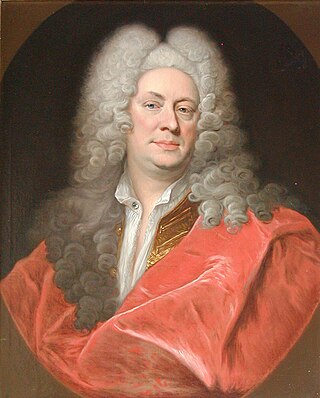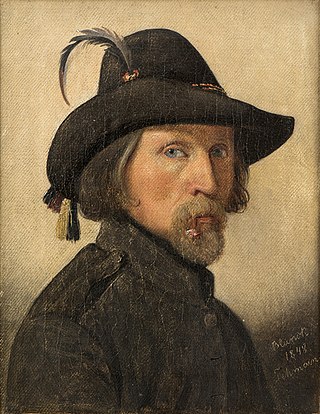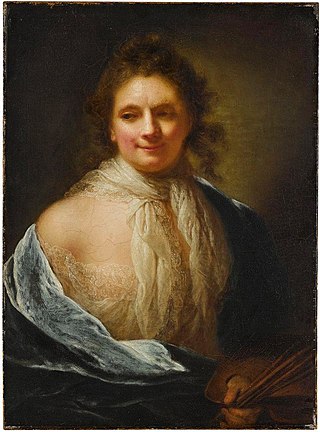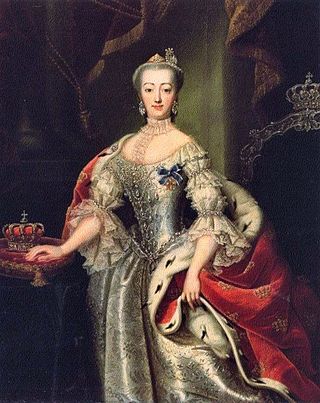
Johann Salomon Wahl (1689, Chemnitz - 5 December 1765, Copenhagen) was a German artist who became a court painter in Denmark.

Johann Salomon Wahl (1689, Chemnitz - 5 December 1765, Copenhagen) was a German artist who became a court painter in Denmark.
He trained as a painter between 1705 and 1711 with David Hoyer (1667-1720), the court painter in Leipzig. After that, he settled in Hamburg, where he worked as a portrait painter for the Holstein. In 1719, he was called to Denmark to work for the Danish Royal Family.
When Christian VI ascended the throne in 1730, Wahl was appointed as court painter. In 1737, he took over the administration of the Royal Collection. In 1744, he became an honorary member of the Accademia di Belle Arti di Firenze.
He was among the first Northern artists to apply the new French styles of portrait painting, emphasizing one's position in society rather than their personality, although his portraits of those outside the nobility tended to be freer in style.

Hans von Aachen was a German painter who was one of the leading representatives of Northern Mannerism.

Jens Juel was a Danish painter, primarily known for his many portraits, of which the largest collection is on display at Frederiksborg Castle. He is regarded as the leading Danish portrait painter of the 18th century.

Carl Gustaf Pilo was a Swedish artist and painter. Pilo worked extensively in Denmark as a painter to the Danish Royal Court and as professor and director at the Royal Danish Academy of Art, as well as in his native Sweden.

Hendrick Krock was a Danish history painter who, from 1706, was the court painter of Frederick IV as well as his successor Christian VI. Along with Benoit Le Coffre set the tone for history painting in Denmark during the 18th century-1720s, having been influenced by the Italian baroque painting he experienced during his travels. He also played a role in the eventual establishment of an Art Academy in Denmark.

A court painter was an artist who painted for the members of a royal or princely family, sometimes on a fixed salary and on an exclusive basis where the artist was not supposed to undertake other work. Painters were the most common, but the court artist might also be a court sculptor. In Western Europe, the role began to emerge in the mid-13th century. By the Renaissance, portraits, mainly of the family, made up an increasingly large part of their commissions, and in the Early Modern period one person might be appointed solely to do portraits, and another for other work, such as decorating new buildings.

Johann Heinrich Wilhelm Tischbein, known as the Goethe Tischbein, was a German painter from the Tischbein family of artists.

The National Gallery of Denmark is the Danish national gallery, located in the centre of Copenhagen.

Ditlev Conrad Blunck was a Danish-German painter associated with the Danish Golden Age during the first half of the 19th century.

Christian Albrecht Jensen was a Danish portrait painter who was active during the Golden Age of Danish Painting in the first half of the 19th century. Painting more than 400 portraits over the course of his career, he depicted most of the leading figures of the Danish Golden Age, including the writer Hans Christian Andersen, the painter Christoffer Wilhelm Eckersberg, the sculptor Bertel Thorvaldsen, the physicist Hans Christian Ørsted and the theologian N. F. S. Grundtvig.
Events from the year 1765 in art.
Events from the year 1689 in art.

Anthoni Schoonjans, nicknamed Parhasius was a Flemish painter known for his portraits as well as his history paintings. After training in Antwerp he had an international career, which saw him work in various countries in Europe including France, Italy, Germany, Austria, The Dutch Republic and Denmark. He was a court painter in Vienna, Copenhagen, Berlin and Düsseldorf.

Danish art is the visual arts produced in Denmark or by Danish artists. It goes back thousands of years with significant artifacts from the 2nd millennium BC, such as the Trundholm sun chariot. For many early periods, it is usually considered as part of the wider Nordic art of Scandinavia. Art from what is today Denmark forms part of the art of the Nordic Bronze Age, and then Norse and Viking art. Danish medieval painting is almost entirely known from church frescos such as those from the 16th-century artist known as the Elmelunde Master.

Anna Dorothea Therbusch was a prominent Rococo painter born in the Kingdom of Prussia. About 200 of her works survive, and she painted at least eighty-five verified portraits.

Friedrich Carl Gröger was a north-German portrait painter and lithographer. One of the most respected portraitists of his time in northern Germany, his works are to be found in several museums, including the Hamburger Kunsthalle, as well as in north German, Holstein and Danish private collections.

Vigilius Eriksen was a Danish painter. He was the royal portraitist to Christian VI of Denmark.

Johann Georg Ziesenis was a German – Danish portrait painter.

Carl Marcus Tuscher was a German-born Danish polymath: portrait painter, printmaker, architect, and decorator of the Baroque period.

Andreas Pedersen Brünniche was a Danish portrait painter, active in the period called either late Baroque or early Rococo.

Nicolaus Georg Geve, also Claus Georg Geve was a Danish painter and illustrator. It is thought that Geve was born in either Schleswig or Hesse.